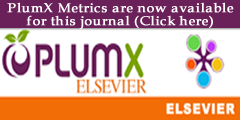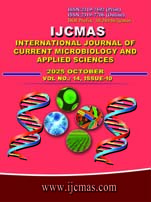


 National Academy of Agricultural Sciences (NAAS)
National Academy of Agricultural Sciences (NAAS)

|
PRINT ISSN : 2319-7692
Online ISSN : 2319-7706 Issues : 12 per year Publisher : Excellent Publishers Email : editorijcmas@gmail.com / submit@ijcmas.com Editor-in-chief: Dr.M.Prakash Index Copernicus ICV 2018: 95.39 NAAS RATING 2020: 5.38 |
SSTIs are a major international health problem, which is becoming increasingly complex due to antimicrobial resistance (AMR) and the popularity of unproven over-the-counter creams. The antimicrobial effectiveness of four commercially available topical formulations namely Soframycin (pharmaceutical antibiotic), Colgate Dental Cream (multipurpose formulation), Boroplus (herbal preparation), and Fair and Lovely (cosmetic cream) were systematically tested against S. aureus, B. subtilis, E. coli and A. niger in agar well diffusion method. Findings indicated a strong pecking order: Soframycin was the strongest antimicrobial agent against all organisms, Colgate had medium effect, Boroplus had weak effects and Fair and Lovely showed no effect at all. The results of these findings point to some essential inconsistencies between clinically-proven drugs and consumer-centered products with the tendency of being assertive by antimicrobial claims. It is clear, in the absence of activity in cosmetic cream and limited efficacy of herbal preparations, the dangers in replacing unverified products with evidence-based therapies with potential implications of failure to cure and resistance development. This paper offers experimental data to support the significance of rational topical therapy, regulatory examination of consumer products, and educating the populace to reverse unsuitable culture during the AMR era.
Silverberg, B. (2021). A Structured Approach to Skin and Soft Tissue Infections (SSTIs) in an Ambulatory Setting. Clinics and Practice, 11(1), 65–74. https://doi.org/10.3390/clinpract11010011
Chiller, K., Selkin, B. A., & Murakawa, G. J. (2001). Skin Microflora and Bacterial Infections of the Skin. Journal of Investigative Dermatology Symposium Proceedings, 6(3), 170–174. https://doi.org/10.1046/j.0022-202x.2001.00043.x
Salam, M. A., Al-Amin, M. Y., Salam, M. T., Pawar, J. S., Akhter, N., Rabaan, A. A., & Alqumber, M. A. A. (2023). Antimicrobial Resistance: a Growing Serious Threat for Global Public Health. Healthcare, 11(13). https://doi.org/10.3390/healthcare11131946
Noa Ziklo, Bibi, M., Sinai, L., & Salama, P. (2024). Niacinamide Antimicrobial Efficacy and Its Mode of Action via Microbial Cell Cycle Arrest. Microorganisms, 12(8), 1581–1581. https://doi.org/10.3390/microorganisms12081581
Ramirez, M., & Tolmasky, M. (2017). Amikacin: Uses, Resistance, and Prospects for Inhibition. Molecules, 22(12), 2267. https://doi.org/10.3390/molecules22122267
Argenziano, G., Ardigò, M., Micali, G., Nasca, M. R., Scilletta, A., Tognetti, L., Pietro Rubegni, & Veraldi, S. (2024). Review - Expert Opinion on Antibiotics and Antibiotic Resistance in Dermatology. Dermatology Practical & Conceptual, 14(4), e2024282–e2024282. https://doi.org/10.5826/dpc.1404a282
Lang, J. C., Shahata, M., & Melican, K. (2024). Towards Sustainable Antimicrobial Therapies for Staphylococcus aureus Skin Infections. Deleted Journal, 1(1). https://doi.org/10.1093/sumbio/qvae023
Muhaj, F. F., George, S. J., & Tyring, S. K. (2022). Bacterial antimicrobial resistance and dermatological ramifications*. British Journal of Dermatology, 187(1), 12–20. https://doi.org/10.1111/bjd.21033
Kulik-Siarek, K., Klimek-Szczykutowicz, M., B?o?ska-Sikora, E., Zarembska, E., & Wrzosek, M. (2024). Exploring the Antimicrobial Potential of Natural Substances and Their Applications in Cosmetic Formulations. Cosmetics, 12(1), 1.https://doi.org/10.3390/cosmetics12010001
Strompfová, V., Štempelová, L., & Tomáš Wolaschka. (2024). Antibacterial activity of plant-derived compounds and cream formulations against canine skin bacteria. Veterinary Research Communications. https://doi.org/10.1007/s11259-024-10324-0
Tirant, M., Tirant, H., & Uwe Wollina. (2024). Herbal Bioactive Compounds for Skin Infections and Inflammatory Conditions. Open Access Macedonian Journal of Medical Sciences, 12, 1–44. https://doi.org/10.3889/oamjms.2024.11888
Agrawal, R., Priyanka Jurel, Deshmukh, R., Ranjit Kumar Harwansh, Garg, A., Kumar, A., Singh, S., Ajay Guru, Kumar, A., & Vinoth Kumarasamy. (2024). Emerging Trends in the Treatment of Skin Disorders by Herbal Drugs: Traditional and Nanotechnological Approach. Pharmaceutics, 16(7), 869–869. https://doi.org/10.3390/pharmaceutics16070869
Srivastav, A., Srivastav, Y., Hameed, A., & Ahmad, M. I. (2024). Prevention and cure of dermatology disorders using herbal medications: summary. International Journal of Indigenous Herbs and Drugs, 1–14. https://doi.org/10.46956/ijihd.v9i1.568
Shehara Gunawardana, & Dias, B. (2024). Methodological advances in formulation and assay of herbal resources-based topical drug delivery systems. Journal of Complementary and Integrative Medicine. https://doi.org/10.1515/jcim-2024-0181
Anita Ioana Visan, & Negut, I. (2024). Coatings Based on Essential Oils for Combating Antibiotic Resistance. Antibiotics, 13(7), 625–625. https://doi.org/10.3390/antibiotics13070625
Kamat, S., Marathe, P., Tripathi, R., Raut, S., & Khatri, N. (2020). Over-the-counter medicines: Global perspective and Indian scenario. Journal of Postgraduate Medicine, 66(1), 28. https://doi.org/10.4103/jpgm.jpgm_381_19
Ayukekbong, J. A., Ntemgwa, M., & Atabe, A. N. (2017). The threat of antimicrobial resistance in developing countries: causes and control strategies. Antimicrobial Resistance & Infection Control, 6(1). https://doi.org/10.1186/s13756-017-0208-x
Conover, E. A. (2002). Over-the-Counter Products: Nonprescription Medications, Nutraceuticals, and Herbal Agents.cClinical Obstetrics and Gynecology, 45(1), 89–98. https://doi.org/10.1097/00003081-200203000-00010
Bouissane, L., Elfardi, Y., Khatib, S., … et al. (2025). Medicinal plants and their derivatives for skin and hair: A Mediterranean perspective of women care. Archives of Dermatological Research, 317, 710. https://doi.org/10.1007/s00403-025-04202-1 |
 |
 |
 |
 |